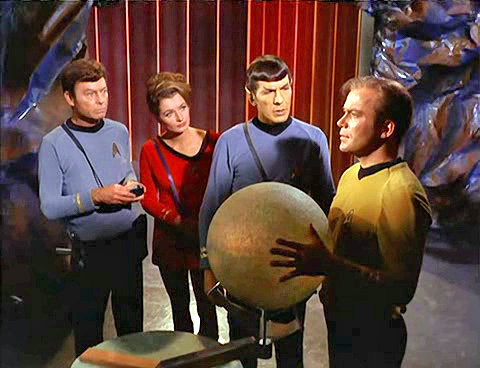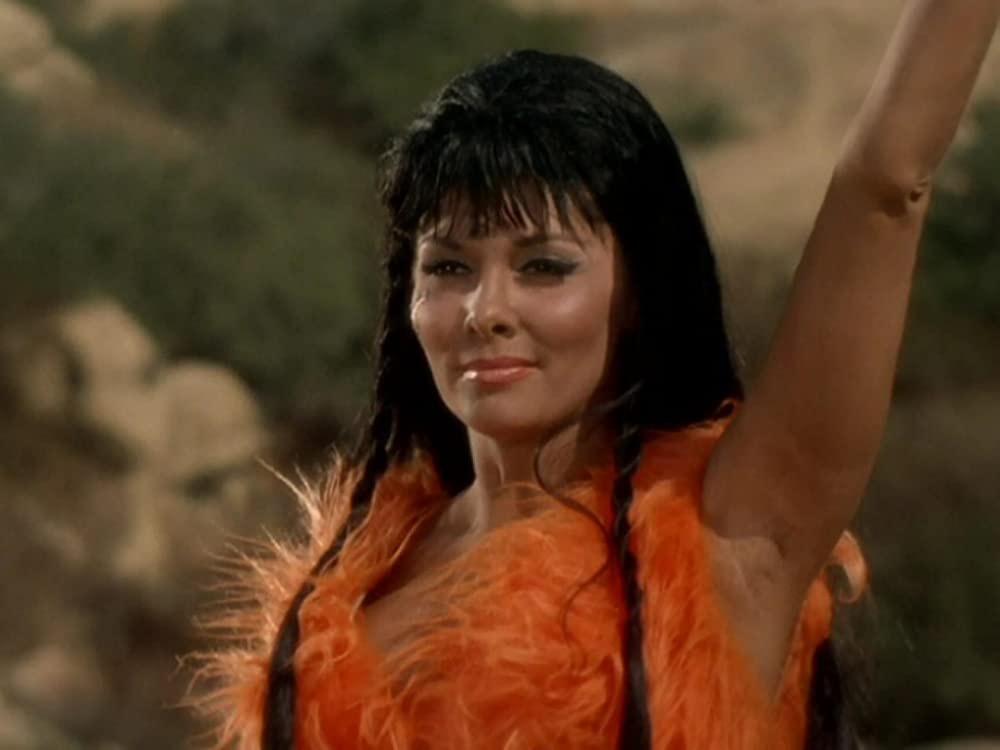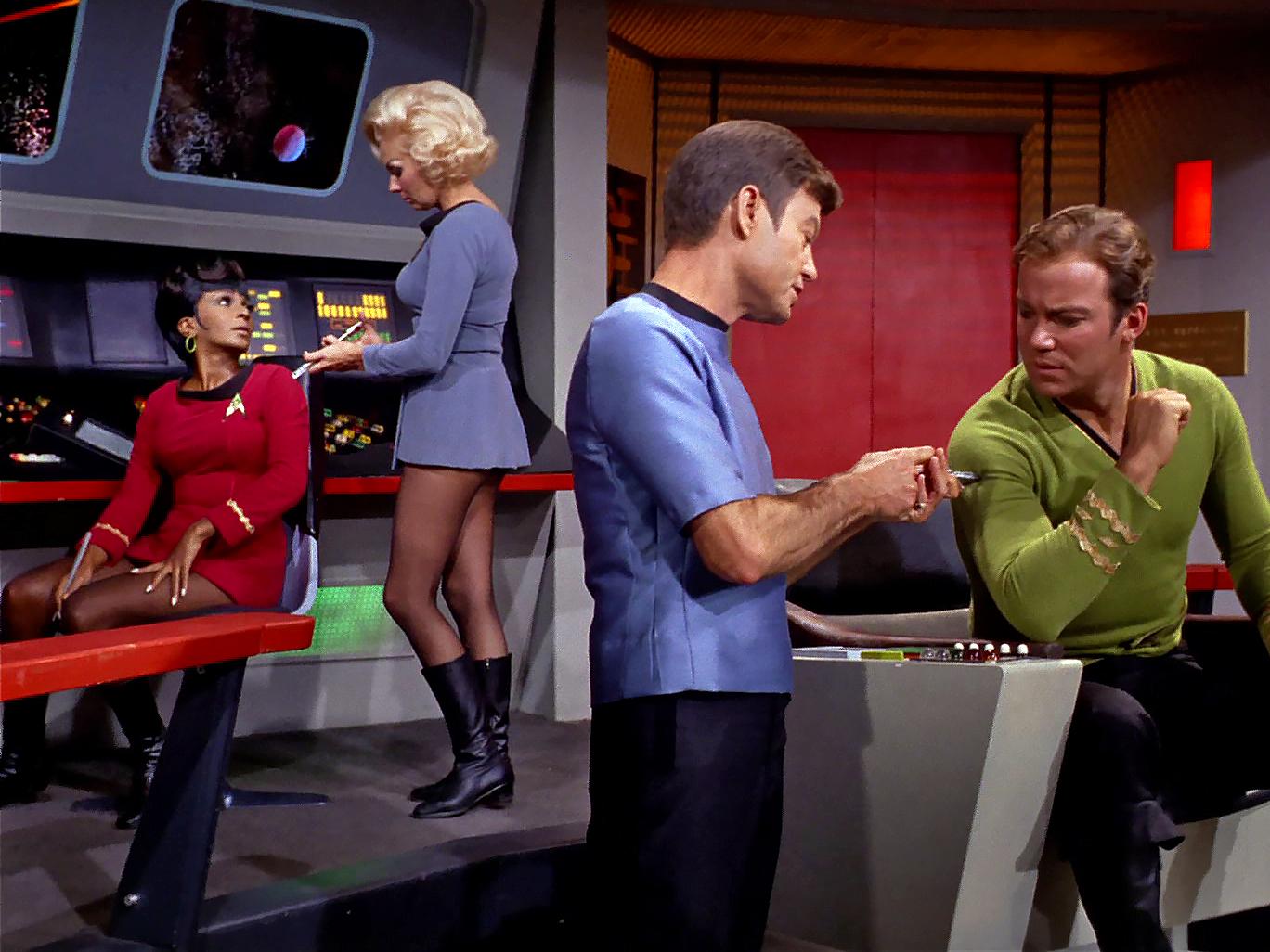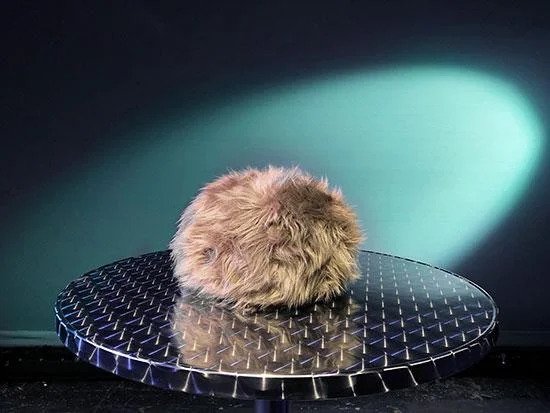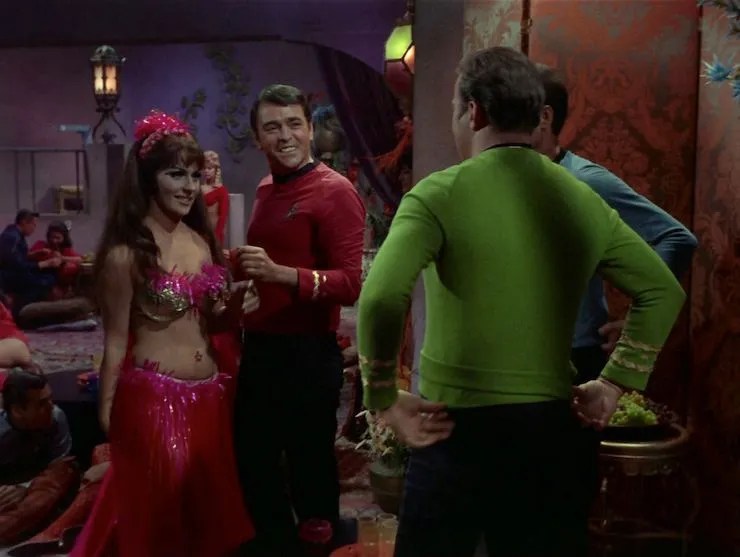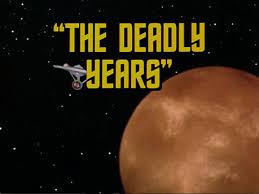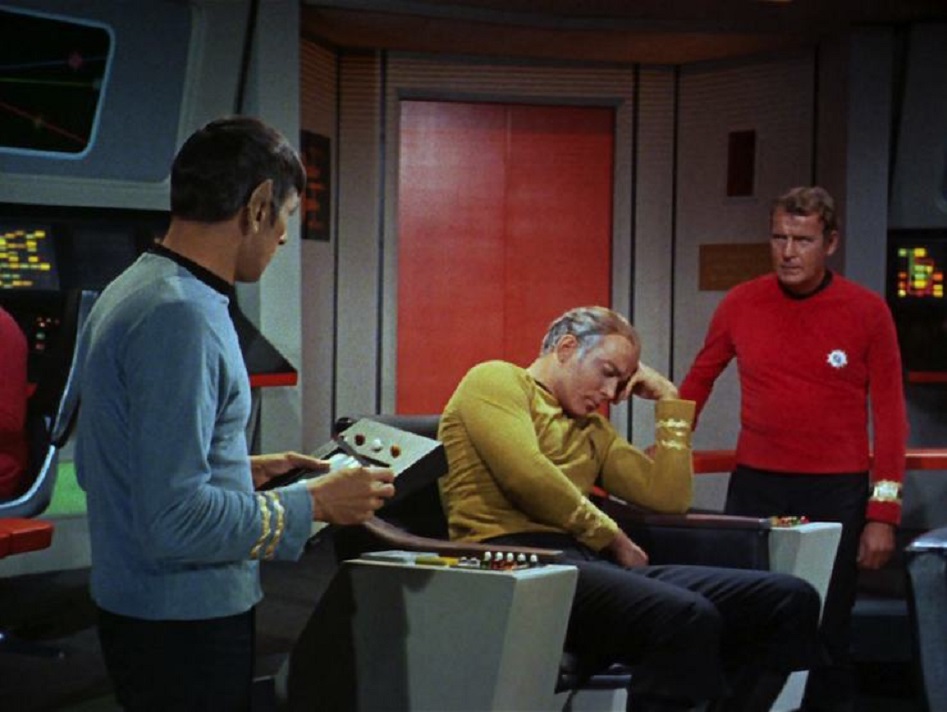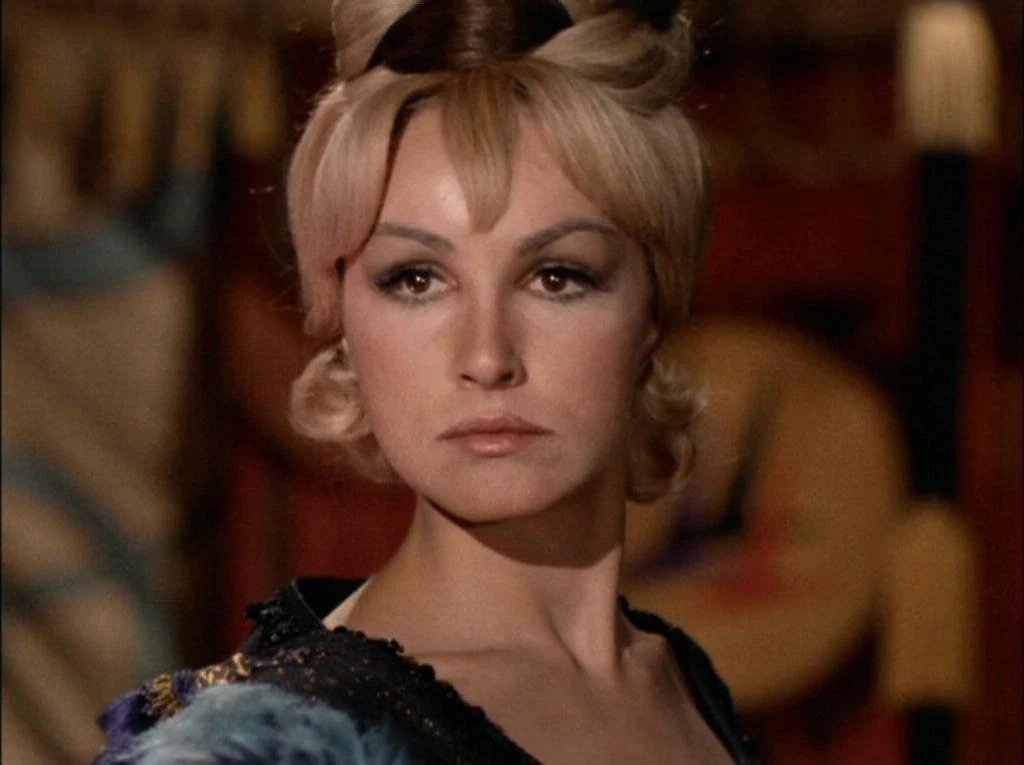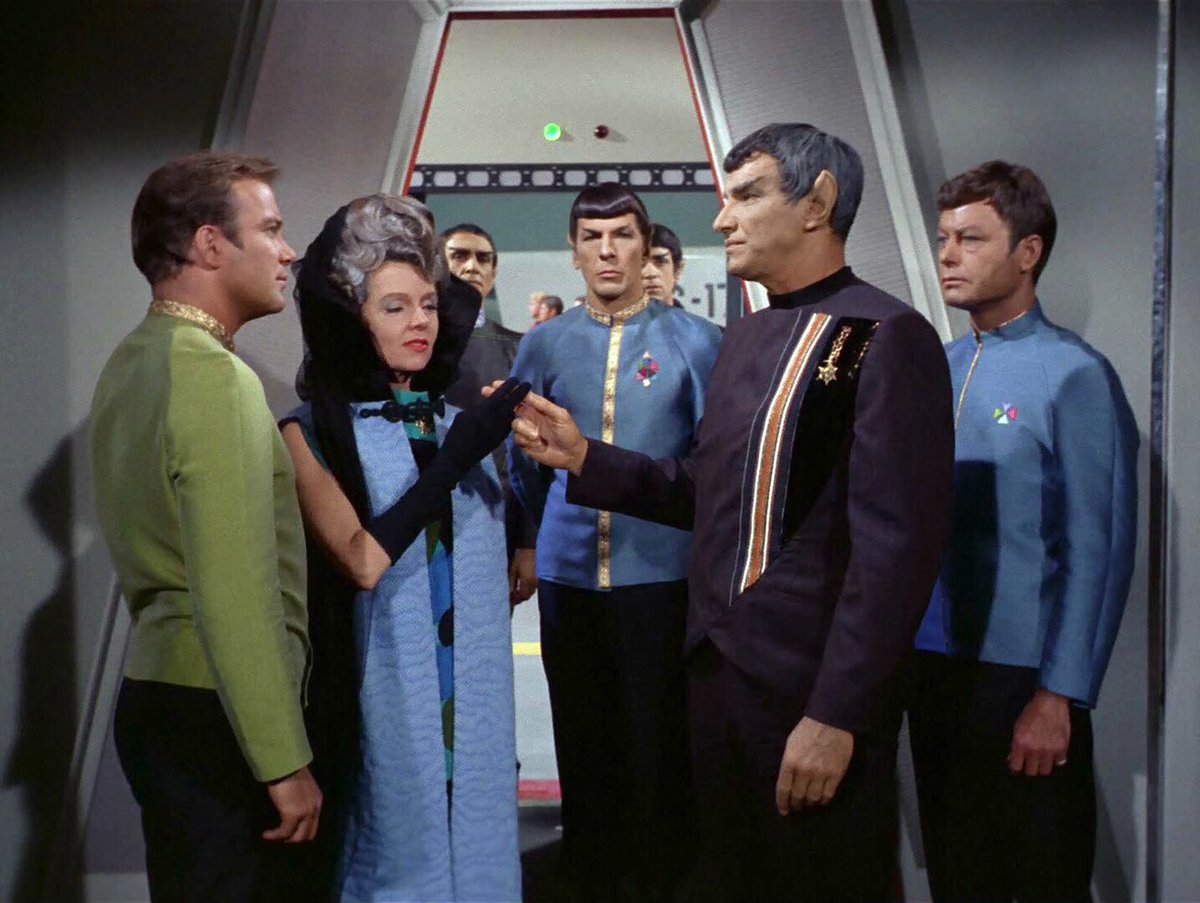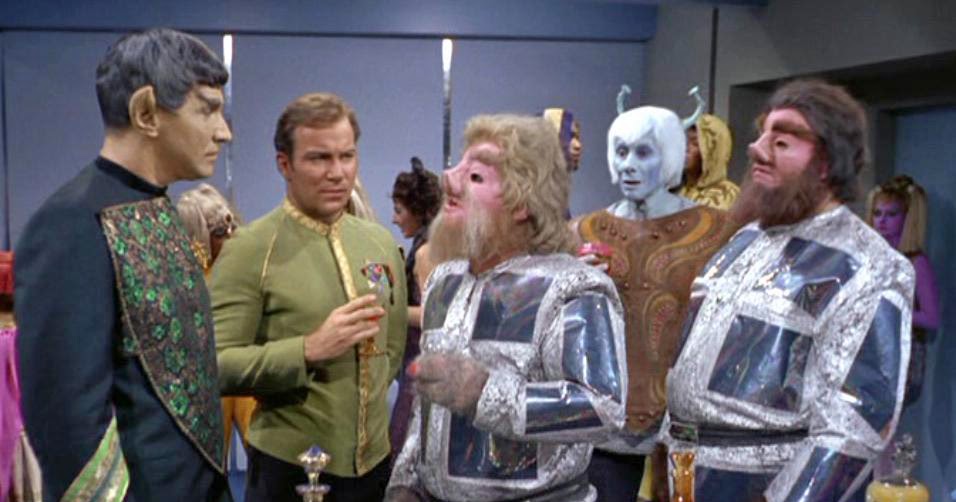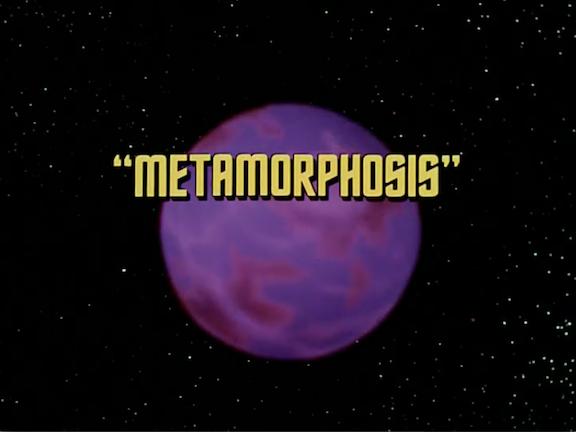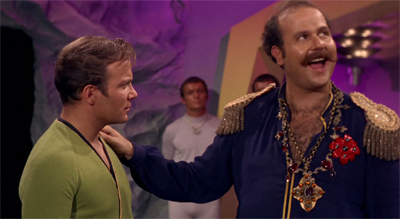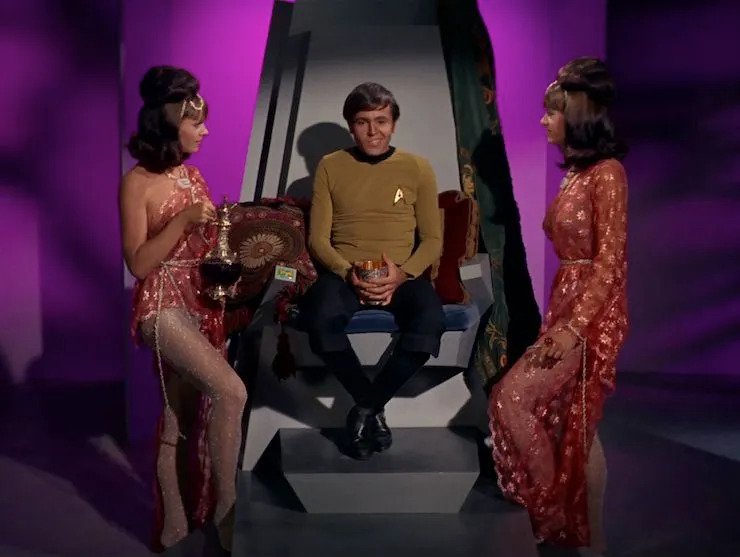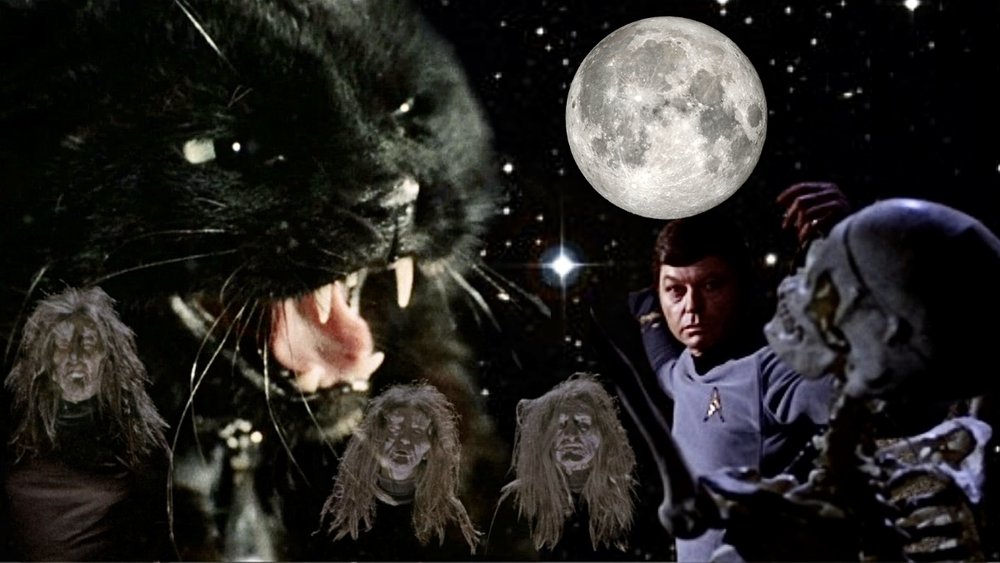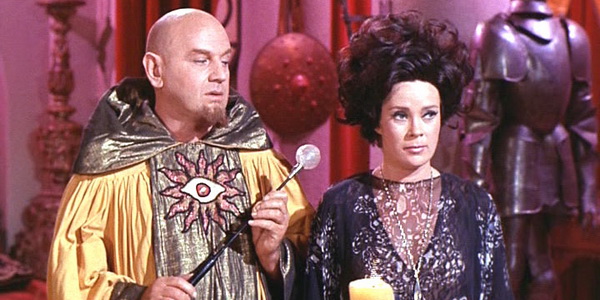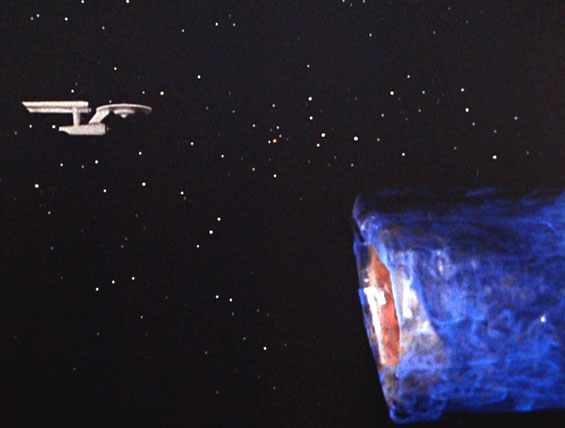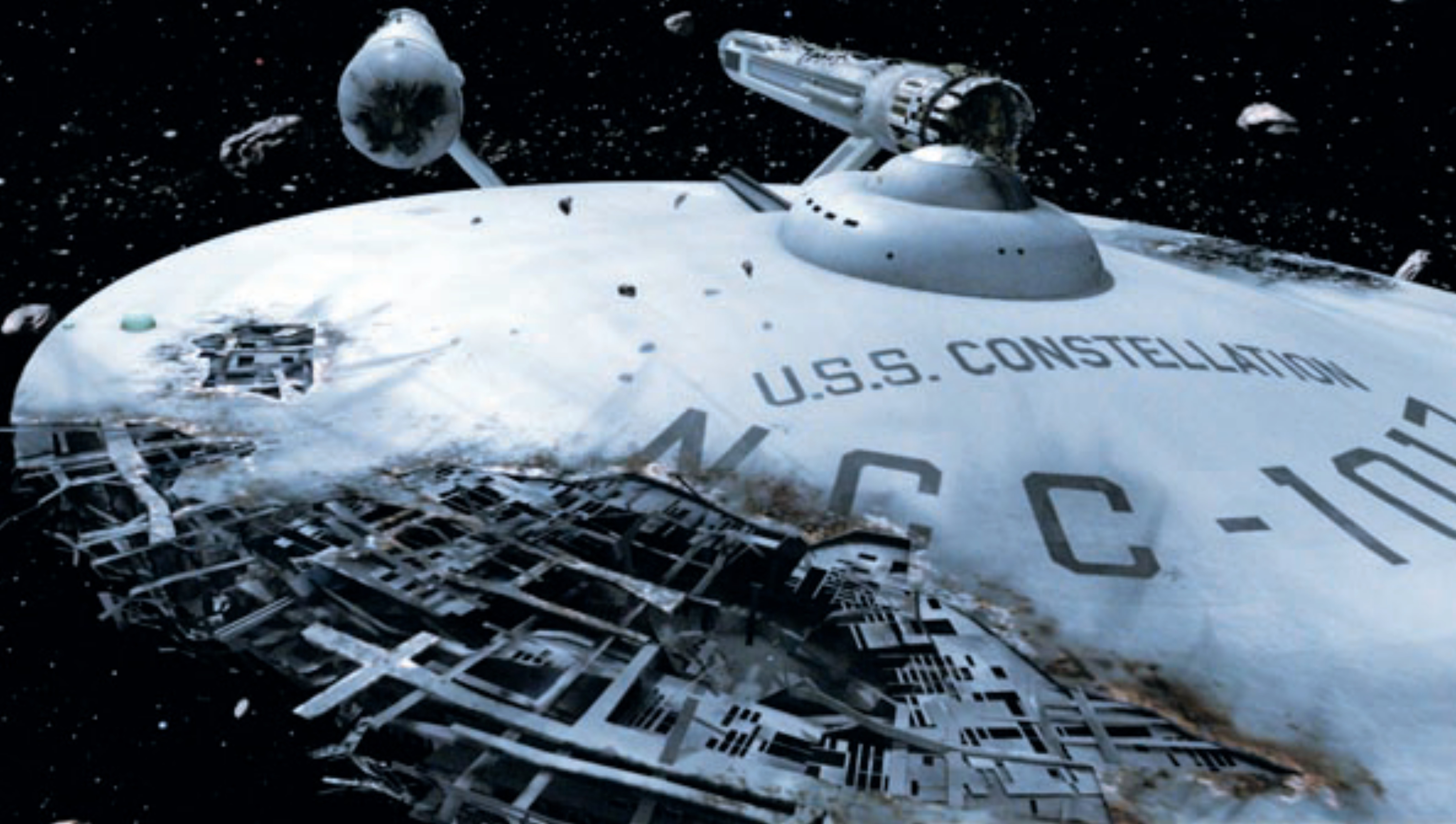★★★★1/2 February 9, 1968 Season 2 Episode 20
If you want to see where we are…and you missed a few…HERE is a list of the episodes in my index located at the top of my blog.
This show was written by Gene Roddenberry and John T. Dugan
A very good episode of three survivors of a race that were killed millions of years ago. They are just energy without form. The crew has to transport under 112.37 miles of rock. As Spock would say…the episode is fascinating.
In a region of space where no other Federation sip has yet been, the Enterprise comes across a planet with three impressive survivors. All that remains of these beings is pure energy, their bodies lost in some cataclysmic war fought 500,000 years ago.

Their minds are capable of feats that 23rd-century humanity can scarcely dream of. So they’ve been waiting around in these containment globules for half a million years, waiting for their probable descendants to start exploring space. The reason the survivors contacted the Enterprise was to borrow three humanoid bodies (Kirk, Spock, and Ann Mulhall) in order to construct android shells for themselves. They borrow Kirk’s (now call him Sargon), Spock’s (now Henoch, from the ‘other’ side), and Dr. Mulhall’s (now Thalassa). It was just to be temporary. The longer they stay in the body the more the body deteriorates.
There’s a kink in the plans though. Apparently, Henoch hasn’t spent the past half million years contemplating peaceful pursuits… we learn this in short order when Spock’s face assumes an uncharacteristically evil grin as Henoch confidently makes plans to remove Sargon from the equation and take over everything. He plans to be free and live as a human. Will Spock, Kirk, and Doctor Mulhall’s bodies and souls die?
We get to see Spock act out as a sadistic villain…there’s a creepy chilling tone to some of this as Thalassa starts turning bad also. Majel Barrett as Christine Chapel does a great job in this episode as well. She gets to share something that she has always wanted.
From IMDB:
As a lieutenant commander, Ann Mulhall has the distinction of being the highest-ranking female Starfleet character shown in The Original Series.
The voice of Sargon was played by James Doohan. Sargon of Akkad was a Mesopotamian king, who by most accounts, began ruling around 2269 B.C. In the show the year is around 2268 A.D.
First Star Trek appearance of Diana Muldaur. She would also appear as Miranda Jones in the episode Star Trek: Is There in Truth No Beauty? (1968), and as Dr. Kathryn Pulaski in 20 episodes of Star Trek: The Next Generation (1987).
This episode marks George Takei’s return to the series after an absence of some months while filming The Green Berets (1968). His last appearance was Star Trek: I, Mudd (1967), which was ten episodes earlier in production order.
One of the fiberglass globes was re-used later as part of the Romulan cloaking device in Star Trek: The Enterprise Incident (1968), and for M-4 in Star Trek: Requiem for Methuselah (1969).
Thalassa is a Greek name for the sea. Henoch is a variation of the Hebrew name Enoch, who in the Book of Genesis was a man taken bodily to Heaven without dying.
Writer John T. Dugan wrote the original script of this episode after he had read an article about highly sophisticated robots. In his original draft, Sargon and Thalassa continue their existence as spirits without bodies, floating around the universe. However, Gene Roddenberry, who did an uncredited re-write on the script, changed the ending to the aliens fading out into oblivion. This led to Dugan using his pen-name John Kingsbridge in the episode’s credits.
Joseph Pevney was originally slated to direct this episode; however, he quit the series after Star Trek: The Immunity Syndrome (1968), citing the lack of discipline from the actors after producer Gene L. Coon left the show.
A still image taken from blooper reel of Bill Blackburn (Hadley/Android) removing the latex android make-up from his head appears in the end credits of Star Trek: By Any Other Name (1968). That episode was produced the week before this one and aired two weeks later, on 23 February 1968.
The stand for one of the globes was later turned upside-down and used as a piece of technology on Atoz’s desk in Star Trek: All Our Yesterdays (1969).
This episode features colorful back lights on the Enterprise sets, mostly green and purple, which were not used since the early episodes of the first season.
The name of the planet itself, Arret, is never mentioned onscreen. Arrete means “stop” in French, from which the English word “arrest” is derived.
The remastered version of this episode aired in many North American markets during the weekend of 7 July 2007. It featured new effects shots of the Enterprise and a new, more realistic version of planet Arret. It also included shots of the planet matted into interior viewscreen shots.
Still photos of a smiling Spock leaning against a doorway and a non-canonical image of Bill Blackburn, dressed as the android, were used in the end credits of Star Trek: The Immunity Syndrome (1968). That episode was produced before this one, but did not go to air until 19 January 1968.
This episode and its writer, John T. Dugan, earned a Writers Guild of America Award nomination in the category Best Written Dramatic Episode in 1968.
This is the second time a reference is made in Star Trek about the Apollo moon program, after Star Trek: Tomorrow Is Yesterday (1967). Filmed more than a year-and-a-half before the first lunar landing, Kirk rhetorically asks McCoy in this episode, “Do you wish that the first Apollo mission hadn’t reached the Moon?” The first manned Apollo mission, Apollo 1 (intended to be a test-flight of the Command and Service Module in Earth orbit only), never flew, since a tragic fire claimed the lives of three astronauts. This happened on 27 January 1967, months before the script was submitted to the production team and a full year before this episode aired. The first Apollo mission in which astronauts orbited, and technically “reached”, the moon was Apollo 8 in December 1968, ten months after this episode aired. However, the Apollo 11 astronauts were the first to “reach” the moon by landing on it in 20 July 1969, after Star Trek was canceled. Kirk’s next comments about going “on to Mars and then to the nearest star” seem to suggest that he is referring to the Apollo 11 lunar mission.
This takes place in 2268.
This episode is the latest in any season to feature a new score, albeit a partial one, by George Duning. Parts of the new score would be heard for the rest of the season, including the menacing Henoch cues in Star Trek: Patterns of Force (1968) and Star Trek: The Omega Glory (1968). However, most of this score, notably the love themes, would never be reused in another episode. This sets it apart from other scores, such as those from Star Trek: Who Mourns for Adonais? (1967) and Star Trek: Elaan of Troyius (1968), whose themes would be reused extensively.
Summary
Brought deep into an uncharted part of the galaxy, the Enterprise comes across three disembodied beings, their essence each contained in a globe-like receptacle. Their leader, Sargon, asks only one thing of Kirk and his crew – lend them the bodies of Kirk, Spock and crew member Ann Mulhall long enough for them to build robot bodies to inhabit for perpetuity. The beings have been without physical form since their civilization was destroyed over 500,000 years ago but have powers far greater than ordinary humans. Kirk and the rest agree to the exchange, but the alien occupying Spock’s body, Henoch, clearly has designs on keeping the body he has just obtained. When he manages to convince Thalassa to do the same, Sargon – and the body of Capt. Kirk – is in trouble.
CAST
William Shatner … Captain James Tiberius ‘Jim’ Kirk / Sargon
Leonard Nimoy … Mister Spock / Henoch
DeForest Kelley … Dr. McCoy
Diana Muldaur … Ann Mulhall / Thalassa
James Doohan … Scott / Voice of Sargon
Nichelle Nichols … Uhura
George Takei … Sulu
Cindy Lou … Nurse
Majel Barrett … Christine Chapel
Bill Blackburn … Lieutenant Hadley / Android (uncredited)
Frank da Vinci … Lt. Brent (uncredited)
Roger Holloway … Lt. Lemli (uncredited)
Jeannie Malone … Nurse (uncredited)
John Hugh McKnight … Command Lieutenant (uncredited)
Eddie Paskey … Guard (uncredited)


